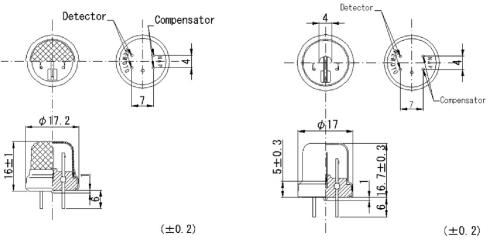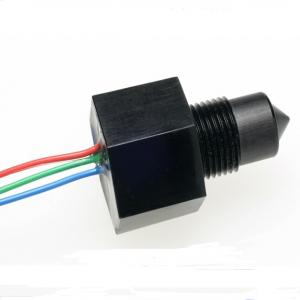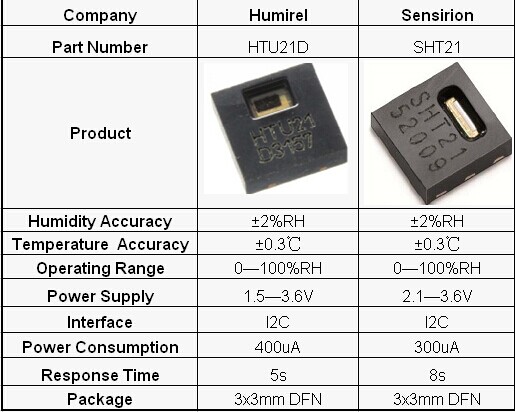What is a Fiber optic sensor?
A
fiber optic sensor is a
sensor
that uses optical fiber either as the sensing element ("intrinsic
sensors"), or as a means of relaying signals from a remote sensor to
the electronics that process the signals ("extrinsic sensors"). Fibers
have many uses in remote sensing. Depending on the application, fiber
may be used because of its small size, or because no electrical power
is needed at the remote location, or because many sensors can be
multiplexed along the length of a fiber by using light wavelength shift
for each sensor, or by sensing the time delay as light passes along
the fiber through each sensor. Time delay can be determined using a
device such as an optical time-domain reflectometer and wavelength
shift can be calculated using an
instrument implementing optical frequency domain reflectometry.
Fiber optic sensors are also immune to electromagnetic interference,
and do not conduct electricity so they can be used in places where there
is high voltage electricity or flammable material such as jet fuel.
Fiber optic sensors can be designed to withstand high temperatures as well.
Intrinsic sensors
Optical fibers can be used as sensors to measure strain,
temperature sensor,
pressure sensor
and other quantities by modifying a fiber so that the quantity to be
measured modulates the intensity, phase, polarization, wavelength or
transit time of light in the fiber. Sensors that vary the intensity of
light are the simplest, since only a simple source and detector are
required. A particularly useful feature of intrinsic fiber optic sensors
is that they can, if required, provide distributed sensing over very
large distances.
Temperature can be measured by using a fiber that has evanescent loss
that varies with temperature, or by analyzing the Rayleigh Scattering,
Raman scattering or the Brillouin Scattering in the optical fiber.
Electrical voltage can be sensed by nonlinear optical effects in
specially-doped fiber, which alter the polarization of light as a
function of voltage or electric field. Angle measurement sensors can
be based on the Sagnac effect.
Special fibers like long-period fiber grating (LPG) optical fibers
can be used for direction recognition. Photonics Research Group of Aston
University in UK has some publications on vectorial bend sensor
applications.
Optical fibers are used as hydrophones for seismic and sonar
applications. Hydrophone systems with more than one hundred sensors per
fiber cable have been developed. Hydrophone sensor systems are used by
the oil industry as well as a few countries' navies. Both
bottom-mounted hydrophone arrays and towed streamer systems are in
use. The German company Sennheiser developed a
laser microphone for use with optical fibers.
A fiber optic microphone and fiber-optic based headphone are useful
in areas with strong electrical or magnetic fields, such as
communication amongst the team of people working on a patient inside a
magnetic resonance imaging (MRI) machine during MRI-guided surgery.
Optical fiber sensors for temperature and pressure have been
developed for downhole measurement in oil wells.The fiber optic sensor
is well suited for this environment as it functions at temperatures too
high for semiconductor sensors (distributed temperature sensing).
Optical fibers can be made into interferometric sensors such as fiber optic gyroscopes, which are used in the
Boeing 767 and in some car models (for navigation purposes). They are also used to make
hydrogen sensors.
Fiber-optic sensors have been developed to measure co-located
temperature and strain simultaneously with very high accuracy using
fiber Bragg gratings.This
is particularly useful when acquiring information from small or complex
structures.Fiber Bragg grating sensors are also particularly well
suited for remote monitoring, and they can be interrogated 250 km away
from the monitoring station using an optical fiber cable.Brillouin
scattering effects can also be used to detect strain and temperature
over large distances (20–120 kilometers).
Other examples
A fiber-optic AC/DC voltage sensor in the middle and high voltage
range (100–2000 V) can be created by inducing measurable amounts of
Kerr nonlinearity in single mode optical fiber by exposing a calculated
length of fiber to the external electric field.The measurement technique
is based on polarimetric detection and high accuracy is achieved in a
hostile industrial environment.
High frequency (5 MHz–1 GHz) electromagnetic fields can be detected
by induced nonlinear effects in fiber with a suitable structure. The
fiber used is designed such that the Faraday and Kerr effects cause
considerable phase change in the presence of the external field. With
appropriate sensor design, this type of fiber can be used to measure
different electrical and magnetic quantities and different internal
parameters of fiber material.
Electrical power can be measured in a fiber by using a structured
bulk fiber ampere sensor coupled with proper signal processing in a
polarimetric detection scheme. Experiments have been carried out in
support of the technique.
Fiber-optic sensors are used in electrical switchgear to transmit
light from an electrical arc flash to a digital protective relay to
enable fast tripping of a breaker to reduce the energy in the arc blast.
Fiber Bragg grating based fiber optic sensors significantly enhance
performance, efficiency and safety in several industries. With FBG
integrated technology, sensors can provide detailed analysis and
comprehensive reports on insights with very high resolution. These type
of sensors are used extensively in several industries like
telecommunication, automotive, aerospace, energy, etc.[
citation needed]
Fiber Bragg gratings are sensitive to the static pressure, mechanical
tension and compression and fiber temperature changes. The efficiency
of fiber Bragg grating based fiber optic sensors can be provided by
means of central wavelength adjustment of light emitting source in
accordance with the current Bragg gratings reflection spectra.
Extrinsic sensors
Extrinsic fiber optic sensors use an optical fiber cable, normally a
multimode one, to transmit modulated light from either a non-fiber
optical sensor, or an electronic sensor connected to an optical
transmitter. A major benefit of extrinsic sensors is their ability to
reach places which are otherwise inaccessible. An example is the
measurement of temperature inside aircraft jet engines by using a fiber
to transmit radiation into a radiation pyrometer located outside the
engine. Extrinsic sensors can also be used in the same way to measure
the internal temperature of electrical transformers, where the extreme
electromagnetic fields present make other measurement techniques
impossible.
Extrinsic fiber optic sensors provide excellent protection of
measurement signals against noise corruption. Unfortunately, many
conventional sensors produce electrical output which must be converted
into an optical signal for use with fiber. For example, in the case of a
platinum resistance thermometer, the temperature changes are translated
into resistance changes. The PRT must therefore have an electrical
power supply. The modulated voltage level at the output of the PRT can
then be injected into the optical fiber via the usual type of
transmitter. This complicates the measurement process and means that
low-voltage power cables must be routed to the transducer.
Extrinsic sensors are used to measure vibration, rotation, displacement, velocity, acceleration, torque, and temperature











